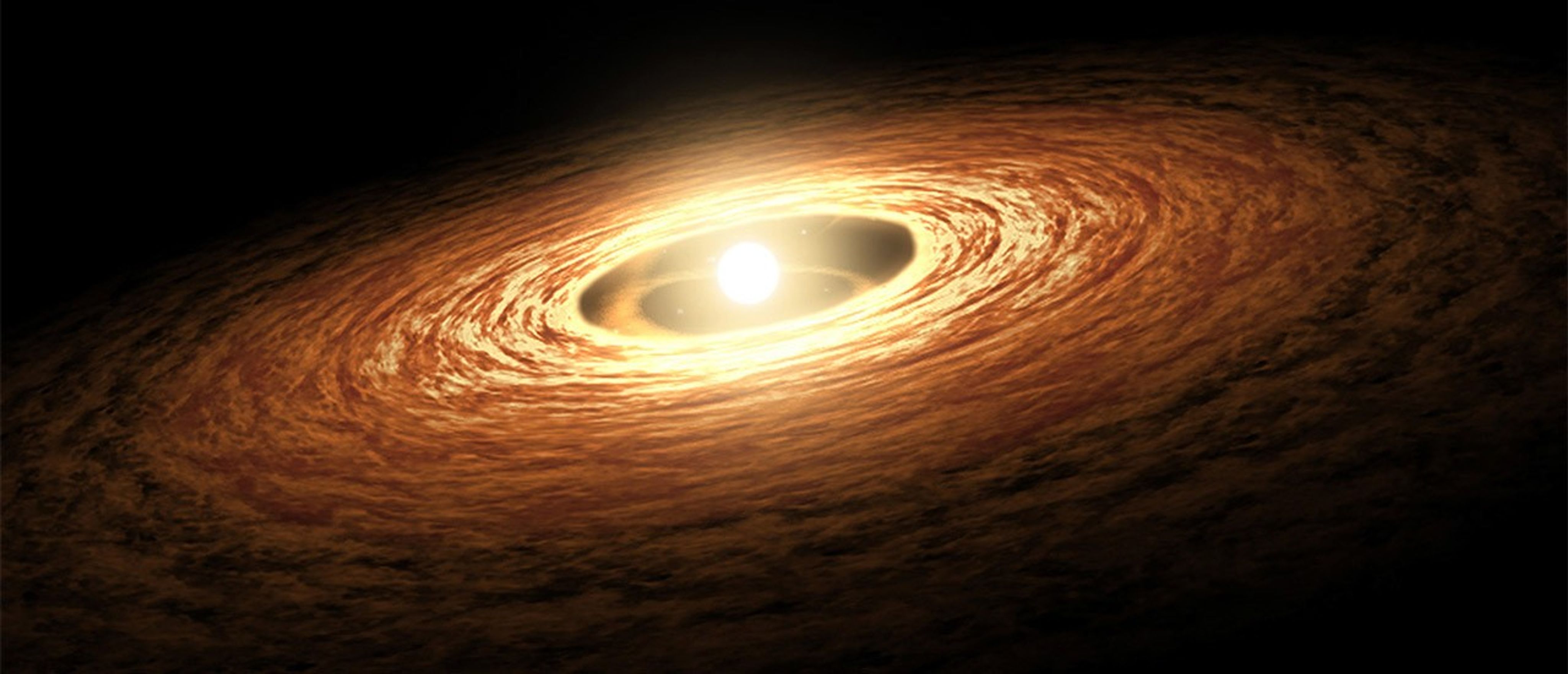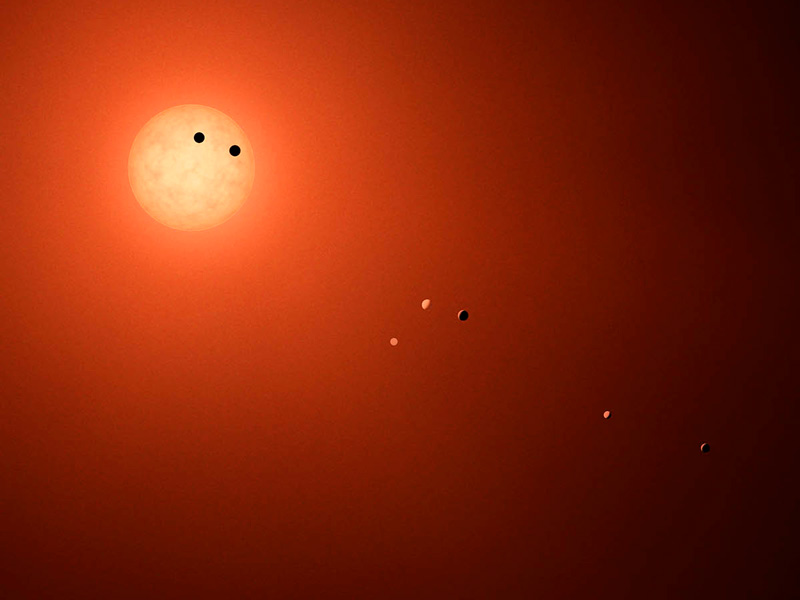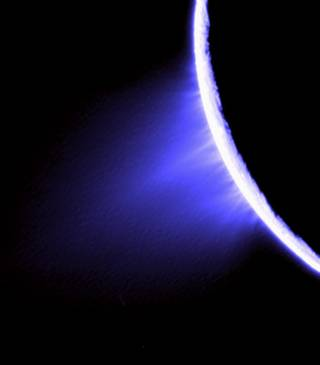An exoplanet, or extrasolar planet, is a planet outside of our solar system that usually orbits another star in our galaxy.
NASA/JPL-Caltech
Most of the exoplanets discovered so far are in a relatively small region of our galaxy, the Milky Way. ("Small" meaning within thousands of light-years of our solar system; one light-year equals 5.88 trillion miles, or 9.46 trillion kilometers.) That is as far as current telescopes have been able to probe. We know from NASA’s Kepler Space Telescope that there are more planets than stars in the galaxy.
Although exoplanets are far – even the closest known exoplanet to Earth, Proxima Centauri b, is still about 4 light-years away – scientists have discovered creative ways to spot these seemingly tiny objects.
How Do We Find Exoplanets?
There are five methods scientists commonly use to discover exoplanets.
The two main techniques are the transit and radial velocity methods.
When a planet passes directly between an observer and the star it orbits, it blocks some of that starlight. For a brief period of time, that star’s light actually gets dimmer. It's a tiny change, but it's enough to clue astronomers in to the presence of an exoplanet around a distant star. This is known as the transit method.
Orbiting planets cause stars to wobble in space, changing the color of light astronomers see when observing a star. Stars are affected by the gravitational tug of their orbiting planets and, when observed through a telescope, this affects the star's light spectrum. If the star moves in the direction of the observer it will appear to be shifted toward blue. If it is moving away from the observer, it will shift toward the red. Observing this is known as the radial velocity method.
NASA’s Exoplanet Space Telescopes
Thousands of exoplanets have been discovered and confirmed orbiting other stars. The first evidence of exoplanets dates to 1917 when Van Maanen identified the first polluted white dwarf, however, the first confirmed detection of an exoplanet would not come until the 1990s. The discovery of exoplanets grew exponentially in the years to follow with the launch of the Kepler Space Telescope.
The Kepler mission was specifically designed to survey our region of the Milky Way galaxy to discover hundreds of Earth-size and smaller planets in or near the habitable zone (also called the “Godilocks zone,” the area around a star where rocky planets could have liquid water on the surface) and determine the fraction of stars that might have such planets around them. After the second of Kepler’s four gyroscope-like wheels failed in 2013, Kepler completed its prime mission that November and began its extended mission, K2. The spacecraft was retired in 2018, but Kepler data are still being used to find exoplanets (more than 2,700 confirmed so far).
NASA’s Spitzer Space Telescope (2013-2020) was not designed to search for exoplanets, but its infrared instruments made it an excellent exoplanet explorer. It was used in the notable discovery of the TRAPPIST-1 system. In 2018 the Transiting Exoplanet Survey Satellite (TESS) was launched as a successor to Kepler to discover exoplanets in orbit around the brightest dwarf stars, the most common star type in our galaxy. NASA’s James Webb Space Telescope and the future Nancy Grace Roman Space Telescope hold great promise for what we can learn from exoplanets. Through spectroscopy, reading light signatures for information, astronomers hope to learn more about planet atmospheres and the conditions of the planets themselves.

Confirmed vs. Candidate
An exoplanet candidate is a likely planet discovered by a telescope but has not yet been proven to actually exist.
It is possible for some candidates to turn out to be "false positives." A planet is considered "confirmed" once it is verified through additional observation using two other telescopes. There are currently thousands of planet candidates awaiting confirmation. But time on telescopes is considered a precious resource and it takes a lot of computing time to find which targets to investigate. This is one area where amateur scientists can work with NASA data to help refine targets and even discover exoplanets. Where computers might miss a single transit, humans can detect small brightness dips in data that might tell us there is a planet to be found.
How Do We Name Exoplanets?
Exoplanet names can look long and complicated at first, especially when compared to names like Venus and Mars. However, there is a logic behind their naming system that is important to how scientists catalog thousands of planets. Astronomers differentiate between the alphanumeric "designations" and alphabetical "proper names." All stars and exoplanets have designations, but very few have proper names.
The first part of an exoplanet name is usually the telescope or survey that discovered it. The number is the order in which the star was cataloged by position. The lowercase letter stands for the planet, in the order in which the planet was found. The first planet found is always named b, with ensuing planets named c, d, e, f and so on. The star that the exoplanet orbits is usually the undeclared "A" of the system, which can be useful if the system contains many stars, which themselves may be designated B or C. (Stars get capital letters; planets receive lowercase designations.) If a bunch of exoplanets around the same star are found at once, the planet closest to its star is named b with more distant planets named c, d, e and so on.
An example of an exoplanet name is Kepler-16b, where "Kepler" is the name of the telescope that observed the system, 16 is the order in which the star was cataloged and "b" is the closest planet to the star. If we were naming Earth as an exoplanet, it would be called Sun d (Sun is the name of our star, and Earth is the third planet, starting with b, Mercury).
Explore TRAPPIST-1
This system of seven rocky worlds–all of them with the potential for water on their surface–is an exciting discovery in the search for life on other worlds.









